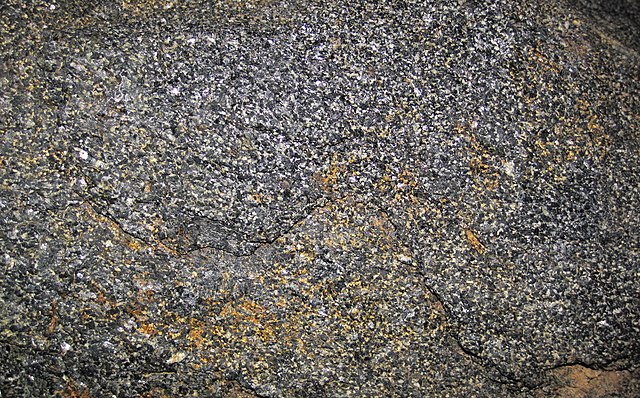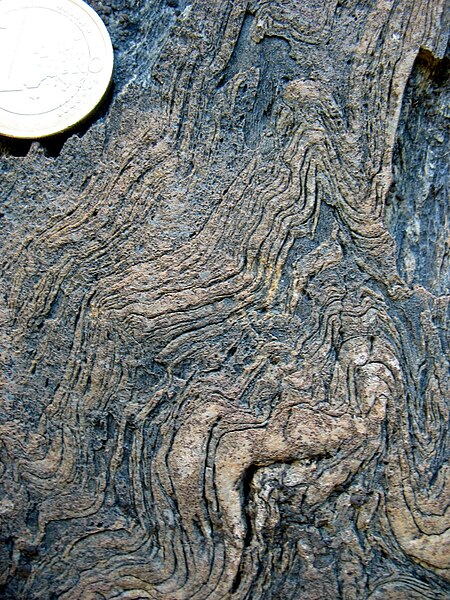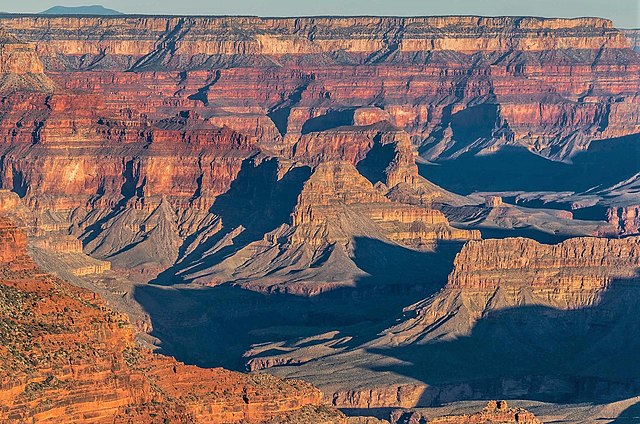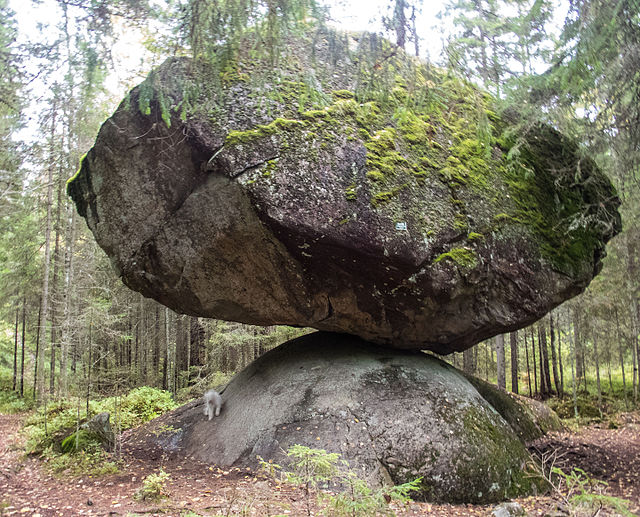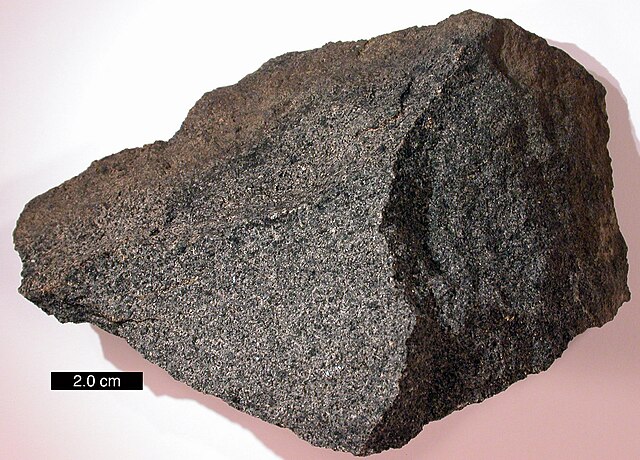Metamorphism is the transformation of existing rock to rock with a different mineral composition or texture. Metamorphism takes place at temperatures in excess of 150 °C (300 °F), and often also at elevated pressure or in the presence of chemically active fluids, but the rock remains mostly solid during the transformation. Metamorphism is distinct from weathering or diagenesis, which are changes that take place at or just beneath Earth's surface.
A cross-polarized thin section image of a garnet-mica-schist from Salangen, Norway showing the strong strain fabric of schists. The black crystal is garnet, the pink-orange-yellow colored strands are muscovite mica, and the brown crystals are biotite mica. The grey and white crystals are quartz and (limited) feldspar.
Amphibolite formed by metamorphism of basalt showing coarse texture
A mylonite (through a petrographic microscope)
A metamorphic rock, deformed during the Variscan orogeny, at Vall de Cardós, Lérida, Spain
In geology, rock is any naturally occurring solid mass or aggregate of minerals or mineraloid matter. It is categorized by the minerals included, its chemical composition, and the way in which it is formed. Rocks form the Earth's outer solid layer, the crust, and most of its interior, except for the liquid outer core and pockets of magma in the asthenosphere. The study of rocks involves multiple subdisciplines of geology, including petrology and mineralogy. It may be limited to rocks found on Earth, or it may include planetary geology that studies the rocks of other celestial objects.
The Grand Canyon, an incision through layers of sedimentary rocks.
A balancing rock called Kummakivi (literally "strange stone")
Rock outcrop along a mountain creek near Orosí, Costa Rica.
Sample of igneous gabbro


